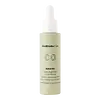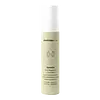What's inside
What's inside
 Key Ingredients
Key Ingredients

 Benefits
Benefits

 Concerns
Concerns

No concerns
 Ingredients Side-by-side
Ingredients Side-by-side

Water
Skin ConditioningPropanediol
SolventGlycerin
HumectantNiacinamide
Smoothing3-O-Ethyl Ascorbic Acid
Skin ConditioningShikimic Acid
Skin ConditioningSerenoa Serrulata Fruit Extract
Skin ConditioningLactoferrin
Skin ConditioningLactobacillus/Pear Juice Ferment Filtrate
Skin ConditioningDiglucosyl Gallic Acid
Sodium Hyaluronate
HumectantButylene Glycol
HumectantTetrasodium Glutamate Diacetate
Caprylyl Glycol
EmollientCaprylhydroxamic Acid
Water, Propanediol, Glycerin, Niacinamide, 3-O-Ethyl Ascorbic Acid, Shikimic Acid, Serenoa Serrulata Fruit Extract, Lactoferrin, Lactobacillus/Pear Juice Ferment Filtrate, Diglucosyl Gallic Acid, Sodium Hyaluronate, Butylene Glycol, Tetrasodium Glutamate Diacetate, Caprylyl Glycol, Caprylhydroxamic Acid
Water
Skin ConditioningGlycerin
HumectantCaprylic/Capric Triglyceride
MaskingSimmondsia Chinensis Seed Oil
EmollientMethyl Glucose Sesquistearate
EmollientPanthenol
Skin ConditioningCetyl Ricinoleate
EmollientTrehalose
HumectantCetearyl Alcohol
EmollientGlyceryl Stearate
EmollientPentylene Glycol
Skin ConditioningCeramide NP
Skin ConditioningCeramide AP
Skin ConditioningCeramide EOP
Skin ConditioningPhytosphingosine
Skin ConditioningCholesterol
EmollientZinc PCA
HumectantLinoleic Acid
CleansingZinc Hydrolyzed Hyaluronate
HumectantLactoferrin
Skin ConditioningSodium Polyglutamate
HumectantMadecassoside
AntioxidantAsiaticoside
AntioxidantLactobacillus Ferment
Skin ConditioningCentella Asiatica Leaf Extract
Skin ConditioningLinolenic Acid
CleansingSodium Hyaluronate
HumectantCellulose
AbsorbentTocopherol
AntioxidantHelianthus Annuus Seed Oil
EmollientMaltodextrin
AbsorbentBehenic Acid
CleansingPolyglyceryl-10 Stearate
Skin ConditioningSodium Cetearyl Sulfate
CleansingTriethyl Citrate
MaskingSodium Levulinate
Skin ConditioningPotassium Sorbate
PreservativeXanthan Gum
EmulsifyingTetrasodium Glutamate Diacetate
Polyglyceryl-6 Behenate
Emulsion StabilisingPhenoxyethanol
PreservativeSodium Hydroxide
BufferingWater, Glycerin, Caprylic/Capric Triglyceride, Simmondsia Chinensis Seed Oil, Methyl Glucose Sesquistearate, Panthenol, Cetyl Ricinoleate, Trehalose, Cetearyl Alcohol, Glyceryl Stearate, Pentylene Glycol, Ceramide NP, Ceramide AP, Ceramide EOP, Phytosphingosine, Cholesterol, Zinc PCA, Linoleic Acid, Zinc Hydrolyzed Hyaluronate, Lactoferrin, Sodium Polyglutamate, Madecassoside, Asiaticoside, Lactobacillus Ferment, Centella Asiatica Leaf Extract, Linolenic Acid, Sodium Hyaluronate, Cellulose, Tocopherol, Helianthus Annuus Seed Oil, Maltodextrin, Behenic Acid, Polyglyceryl-10 Stearate, Sodium Cetearyl Sulfate, Triethyl Citrate, Sodium Levulinate, Potassium Sorbate, Xanthan Gum, Tetrasodium Glutamate Diacetate, Polyglyceryl-6 Behenate, Phenoxyethanol, Sodium Hydroxide
 Reviews
Reviews

Ingredients Explained
These ingredients are found in both products.
Ingredients higher up in an ingredient list are typically present in a larger amount.
Glycerin is already naturally found in your skin. It helps moisturize and protect your skin.
A study from 2016 found glycerin to be more effective as a humectant than AHAs and hyaluronic acid.
As a humectant, it helps the skin stay hydrated by pulling moisture to your skin. The low molecular weight of glycerin allows it to pull moisture into the deeper layers of your skin.
Hydrated skin improves your skin barrier; Your skin barrier helps protect against irritants and bacteria.
Glycerin has also been found to have antimicrobial and antiviral properties. Due to these properties, glycerin is often used in wound and burn treatments.
In cosmetics, glycerin is usually derived from plants such as soybean or palm. However, it can also be sourced from animals, such as tallow or animal fat.
This ingredient is organic, colorless, odorless, and non-toxic.
Glycerin is the name for this ingredient in American English. British English uses Glycerol/Glycerine.
Learn more about GlycerinWe don't have a description for Lactoferrin yet.
Sodium Hyaluronate is hyaluronic acid's salt form. It is commonly derived from the sodium salt of hyaluronic acid.
Like hyaluronic acid, it is great at holding water and acts as a humectant. This makes it a great skin hydrating ingredient.
Sodium Hyaluronate is naturally occurring in our bodies and is mostly found in eye fluid and joints.
These are some other common types of Hyaluronic Acid:
Learn more about Sodium HyaluronateTetrasodium Glutamate Diacetate is a chelating agent. Chelating agents help prevent metal ions from binding to other ingredients. This helps prevent unwanted effects and reactions from a product. These metal ions may come from water and are found in miniscule amounts.
Tetrasodium Glutamate Diacetate can also help other preservatives be more effective.
Water. It's the most common cosmetic ingredient of all. You'll usually see it at the top of ingredient lists, meaning that it makes up the largest part of the product.
So why is it so popular? Water most often acts as a solvent - this means that it helps dissolve other ingredients into the formulation.
You'll also recognize water as that liquid we all need to stay alive. If you see this, drink a glass of water. Stay hydrated!
Learn more about Water